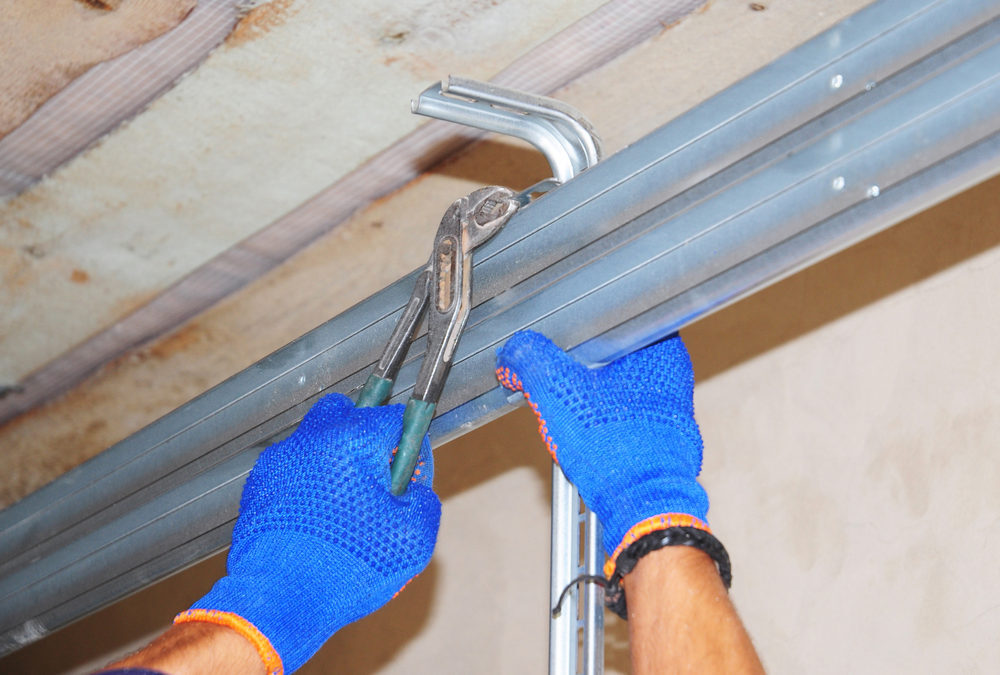The options for your garage door are relatively limitless. But when you install a new garage door, there is more than just the door at stake. We’ve talked a lot about garage door springs and other garage door parts, but we’ve never focused specifically on garage door tracks. What are they? What purpose do they play? And why do you need them? In the end, the best, most professional garage door installer will help you select the right garage door. You will need to know every detail regarding garage door tracks before your garage door is installed. Let’s start with the basics.
What Are Garage Door Tracks?
Garage door tracks are the stationary lanes on which your garage door moves. As the door opens and closes, your garage door tracks facilitate this movement. If your garage door tracks are not in the precise placement they need to be, your garage door will not open or close. Your garage door tracks make up several components in your garage door system. Garage door tracks must be in perfect stationary orientation in order for your garage door to function.
The tracks on your garage door are generally the same for most homes. Many homes in Akron, Canton, and the surrounding areas use an overhead garage door system. The tracks are then placed on the left and right sides of the door. They generally resemble an upside-down L-shaped structure and they will run from the floor to the ceiling of your garage. If you have a sliding garage door, the tracks need to run along the top and bottom of the garage door assembly itself. This way the garage door can slide back and forth with no problem. Garage doors that swing out like carriage house models do not utilize tracks. They open outwards and do not fold back into the garage.
The simple fact of the matter is that your garage doors will not work properly without the tracks. Your garage door is placed on top of the tracks and the rollers allow it to move up and down without effort. In case your garage doors get bent, the wheels nestled within the track will not be able to move properly. Obviously, this could cause huge damage.
Your Guide to Garage Door Tracks
Whether you decide to replace your existing garage door, plan on building a house, or maybe you are renovating your property – you’re going to need garage door tracks. Your garage door is an integral part of your home, and there are so many different types of garage doors. What type of garage door will you use? There are factors you need to consider when you evaluate your garage door tracks.
First, you need to evaluate the application they will be used in. There are limitless varieties of overhead garage doors. Yet, there are only so many track systems. You need to consider key factors before you make a decision. How much headroom do you need? The space between your garage door and the ceiling makes a big difference. Also, consider your side room. The side room is the space on either side of your garage door. And finally, evaluate your garage door top section height. Let’s take a look at each of these factors individually.
Overhead garage doors come in different form factors. They are divided into sections. Each of these sections is hinged together when the garage door and attendant parts are installed. As the garage door opens, they rise on vertical tracks. This is where your tracks come in. The headroom represents the space above the door. It needs to be large enough to connect the vertical and horizontal sections. Torsion or extension springs are meant to counterbalance the weight of the garage door. Your garage door opener manages the whole thing.
Specific Garage Door Track Data
Overhead garage door tracks are described by the radius of the track as well as the amount of headroom. The garage door must fit within a certain threshold. Standard radius tracks are 12″. This means there is 12″ of headroom available to accommodate the garage door and the rest of the garage door components. There are also 15″, 20″, and 32″ varieties. If the radius is larger, the headroom required must be larger as well. The curvature of the track must be properly accommodated.
There are also what are called dual-track systems. They use a second horizontal track installed to the curve of the vertical track, above the horizontal section of your garage door. The only purpose of the dual-track is to allow the top section of the garage door to easily move and travel to the lower track. Let’s evaluate them one by one:
- High-lift Tracks: High-lift track variants are usually used in applications where the home has a very high ceiling. That way the garage door has a lot more room to lift out of the opening without damaging the home.
- Vertical Lift Tracks: Vertical lift tracks are used in commercial applications. And in commercial applications the garage door can only move up and out of the wall far enough to accommodate the opener system.
- Roof Pitch Tracks: In this configuration, the garage door tracks follow the pitch of the roof or mounting structure. These tracks are generally custom cut.
Garage door tracks are a critical part of the proper functioning of your garage door. That’s why if your existing garage door tracks are bent, broken, or otherwise misaligned or problematic, your best bet is to contact a garage door repair professional today.

